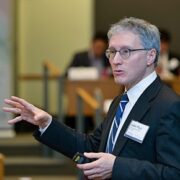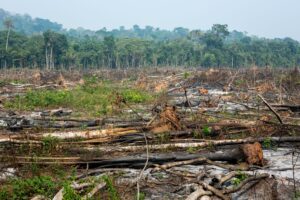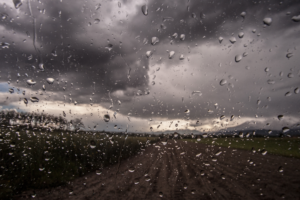Faculty Leadership

ARTHUR VAN BENTHEM
Associate Professor of Business Economics and Public Policy
Faculty Co-Director, Wharton Climate Center

SARAH E. LIGHT
Mitchell J. Blutt and Margo Krody Blutt Presidential Professor Professor of Legal Studies & Business Ethics
Faculty Co-Director, Wharton Climate Center
Affiliated Scholars

Hamsa Bastani
Associate Professor of Operations, Information and Decisions
Associate Professor of Statistics and Data Science
Research Areas: Machine Learning Algorithms and Applications to Healthcare; Revenue Management; Social Good

Brian Berkey
Associate Professor of Legal Studies & Business Ethics
Research Areas: Climate Ethics; Climate Justice; Animal Ethics

Susanna Berkouwer
Assistant Professor in Business Economics & Public Policy
Research Areas: Environmental Economics; Development Economics; Political Economy; Behavioral Economics

Sanya Carley
Presidential Distinguished Professor of Energy Policy and City Planning
Research areas: Energy Justice and Just Transitions; Energy Insecurity; Electricity and Transportation Policies; Public Perceptions of Energy Infrastructure and Technologies

Francis X. Diebold
Paul F. Miller, Jr. and E. Warren Shafer Miller Professor of Social Sciences
Professor of Economics, Finance and Statistics
Research areas: Dynamic Predictive Climate Modeling; Actic Sea Ice; Climate Econometrics

Daniel Garrett
Assistant Professor of Finance
Research areas: Public Finance, Financial Intermediation, Corporate Finance, Taxation

Mirko Heinle
Associate Professor of Accounting
Research areas: Theoretical Research in Financial and Managerial Accounting

Witold Henisz
Vice Dean and Faculty Director, ESG Initiative
Deloitte & Touche Professor of Management in Honor of Russell E. Palmer, former Managing Partner
Research Areas: Climate Risk Disclosure; Materiality & Management of ESG Factors

Benjamin Keys
Rowan Family Foundation Professor
Professor of Real Estate
Professor of Finance
Research Areas: Property Markets; Housing Markets; Mortgage Markets

Steven Kimbrough
Professor of Operations, Information, and Decisions
Research Areas: Risk & Uncertainty; Deep Decarbonation Pathways; Market Design

Cait Lamberton
Duran President’s Distinguished Professor of Marketing
Research areas: Consumer Psychology; Financial Decision Making; Risk Management

John Paul Macduffie
Professor of Management
Research Areas: Vehicle & Mobility Innovations; Urban Transportation; Environmental Law & Policy

Eric Orts
Guardsmark Professor
Professor of Legal Studies & Business Ethics and Professor of Management
Research Areas: Corporate Governance, Environmental Law and Policy, Environmental Management, Professional Ethics, Securities Regulation, Democratic Theory, Constitutional law

Jisung Park
Assistant Professor, School of Social Policy and Practice and Business Economics and Public Policy at Wharton
Research areas: Climate Impacts; Climate Adaptation; Climate Equity

Leandro S. Pongeluppe
Assistant Professor of Management
Research Areas: Stakeholder Management and Socioeconomic Development

Sandra Schafhäutle
Assistant Professor of Accounting
Research Areas: Use of Information in Capital Markets; Corporate Disclosure; Transparency and Disclosure Incentives; Supply Chains

Nicolaj Siggelkow
David M Knott Professor
Vice Dean, Wharton MBA Program
Co-Director, Mack Institute for Innovation Management
Professor of Management
Research Areas: Environmental Sustainability and Competitive Advantage; Connected Strategy

Luke Taylor
John B. Neff Professor in Finance, Professor of Finance
Co-Director, Rodney L. White Center for Financial Research
Coordinator of Finance PhD Program
Research Areas: Sustainable Investing, Climate Finance
Contributing Doctoral Students
Postdoctoral Research Associate, ESG Initiative
Doctoral Student, Operations, Information and Decisions Department
Doctoral Student, Business Economics and Public Policy Department
Doctoral Student, Business Economics and Public Policy Department
Doctoral Student, Operations, Information and Decisions Department
Doctoral Student, Business Economics and Public Policy Department



























